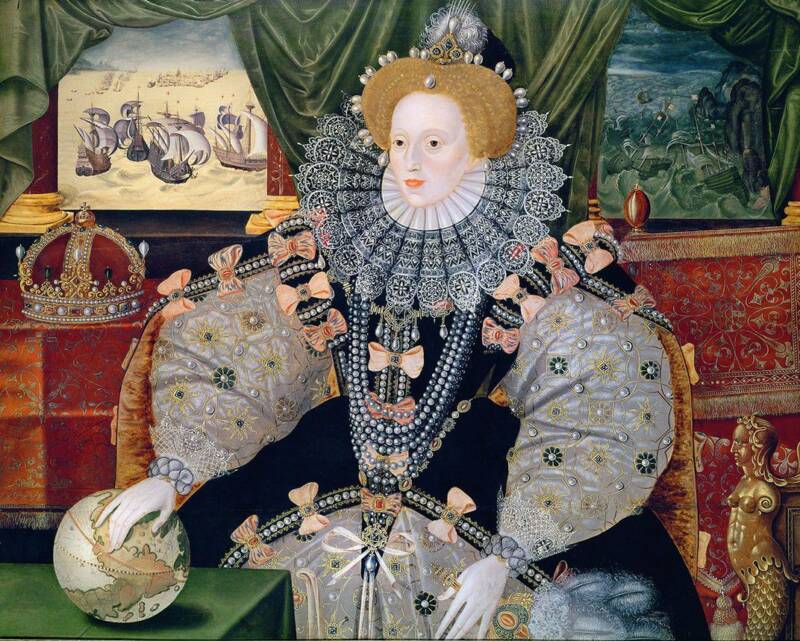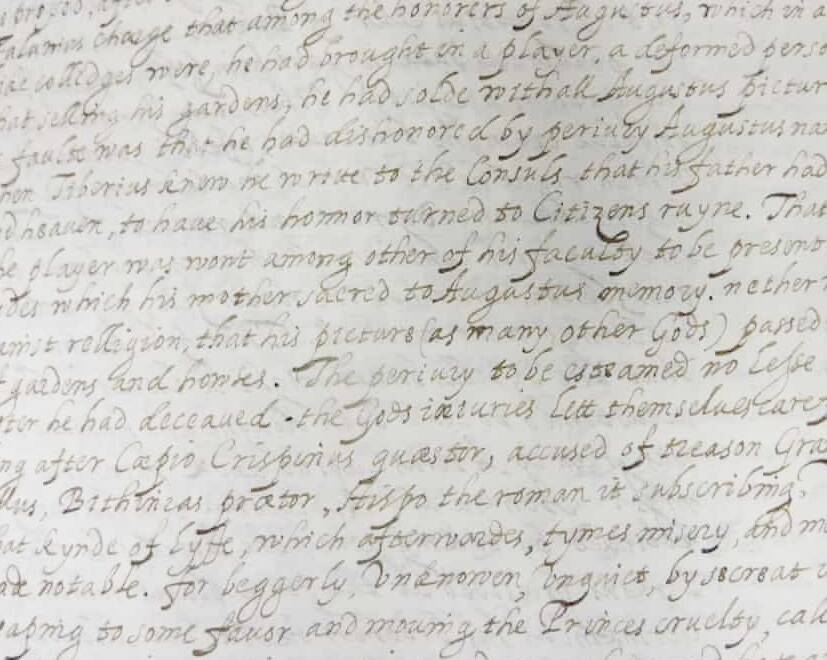"The higher you are in the social hierarchy of Tudor England, the messier you can let your handwriting become. For the queen, comprehension is somebody else’s problem."

Public DomainA new study has revealed Queen Elizabeth I as the unknown translator of a historical Roman text.
In a stunning historical discovery, Queen Elizabeth I has been identified as the anonymous translator behind the English translation of a historical Roman text. And, funnily enough, it was the monarch’s sloppy handwriting that gave it away.
According to Smithsonian Magazine, a researcher analyzed a 16th-century translation of Tacitus’ book Annals — including the type of paper, the style of writing, and the penmanship. Results showed that Queen Elizabeth I was indeed responsible for the translated text.
The astonishing discovery was made by John-Mark Philo, a literary scholar at the University of East Anglia, while he was researching translations of Tacitus’ work. The research was recently published in The Review of English Studies.
While examining a translation of Tacitus’ Annals by an unknown author, the researcher began to notice something — the paper type used for the document happened to be a very distinct stock that was popular in the Elizabethan secretariat in the 1590s.
Another clue involved the watermarks left on the paper — a rampant lion, a crossbow, and the initials G.B. Those were the same watermarks that Queen Elizabeth I used in much of her correspondences.

Lambeth PalaceQueen Elizabeth I’s translation of Tacitus’ Annals.
But that evidence alone wasn’t enough to determine that the translator was in fact the queen herself. Luckily, there was another hidden clue in the document: the handwriting of the author behind the text.
While the translation itself was copied by a professional scribe, the corrections and additions included in the markings are in “an extremely distinctive, disjointed hand,” much like other writings by Queen Elizabeth I.
“That was the strongest clue,” Philo said. “I collected as wide a sample of her handwriting as possible and compared her other translations.”
He added: “Her late handwriting is usefully messy – there really is nothing like it – and the idiosyncratic flourishes serve as diagnostic tools.”
Sure enough, the manuscript and the royal’s handwriting turned out to be a match.
The Tacitus text translated by Queen Elizabeth I was the historian’s first book of Annals. This text laid out the death of the first Roman emperor Augustus and the rise of his successor, Tiberius. It also featured a part in which Germanicus’ wife, Agrippina, is described as she calmed her troops.
The translation reads:
“She a woman of great courage playde the Captaine for that tyme, and bestowed on the soldiors as euery man needed or was wounded, bread and clothes… she stoode at the bridges end to give lawde and praise to the returning legions.”

Wikimedia CommonsQueen Elizabeth I was gifted in linguistics and enjoyed translating.
Philo believes that the queen might have seen herself in Agrippina, given that she herself had given a remarkably similar address in her famous speech at Tilbury, when the British forces were ready to repel the Spanish army.
The style and tone of the translation also mimics Elizabeth’s earlier work, as Philo explained: “Elizabeth goes to some lengths to retain the density of Tacitus’ prose and his celebrated brevity. She follows the contours of the Latin syntax with remarkable commitment, even at the risk of obscuring the sense in English.”
Queen Elizabeth I had remarkable language skills and was able to converse in Latin, French, and Italian. She was also said to be at least familiar with Spanish and Greek.
She was known to take pleasure in her translation work, but her penmanship withered with time as she became increasingly devoted to the “demands of governance” as the queen of Great Britain.
For example, as time went on, the royal’s “m” and “n” were mushed so far down that they became horizontal squiggles, and the pen strokes in her “e” and “d” became disjointed.
“The higher you are in the social hierarchy of Tudor England, the messier you can let your handwriting become,” Philo explained in a press statement. “For the queen, comprehension is somebody else’s problem.”
Next, take a look at this gallery of historical British monarchs like you’ve never seen them before and meet Elizabeth Woodville, the best “Queen Elizabeth” who you know nothing about.





